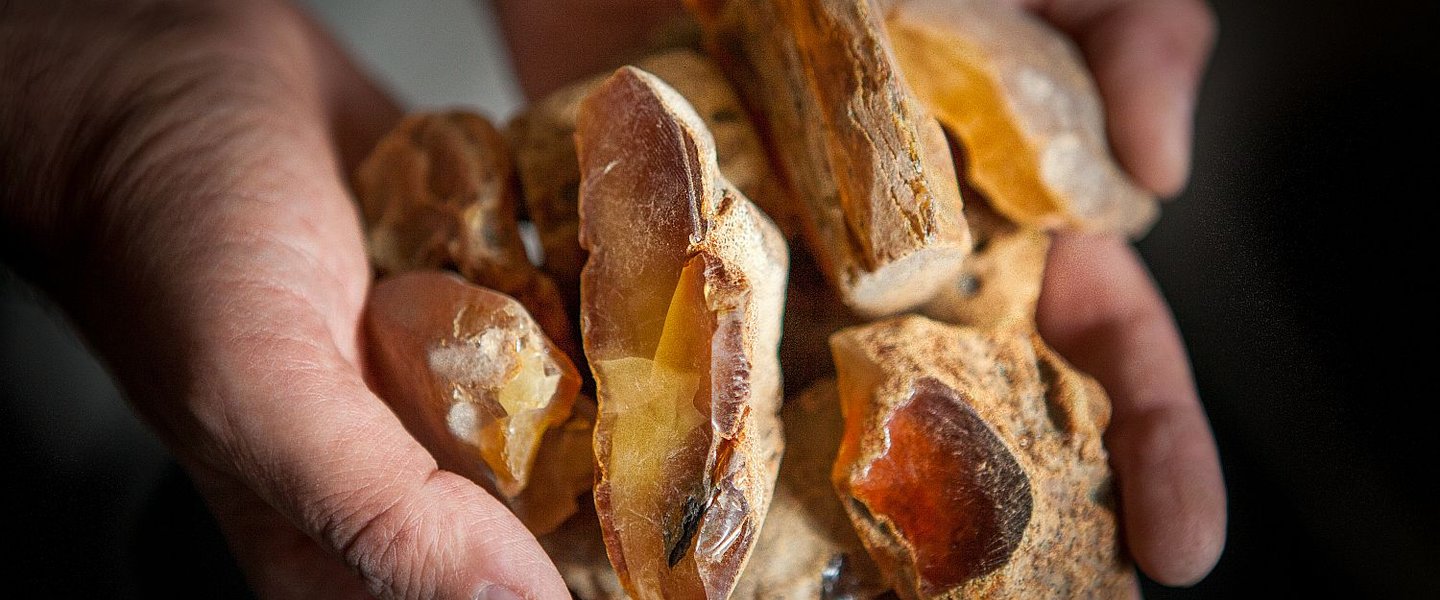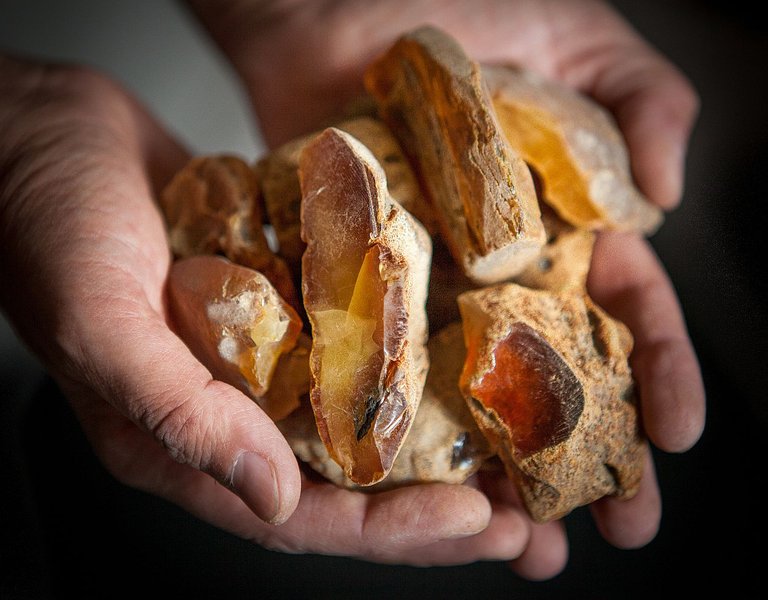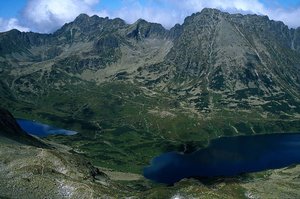Following the Amber Road
It can be golden, brown, reddish or even white, transparent and opaque. Amber also often contains plants, insects, grains of sand and air bubbles, making it truly unique. Each nugget is one of a kind.
Beautiful and unique, amber has been fascinating people for thousands of years. Ancient Greeks believed that amber nuggets were formed by the tears of the daughters of Helios, the Sun god, mourning the death of their brother Phaethon. Amber tears were also shed by the Norse goddess Freya, who missed her husband Odin, and by the Lithuanian goddess of the Baltic Sea, Jurate. The Chinese believed that amber was a transformed soul of a tiger and the person who wore it became as fearless as the predator itself.

Baltic amber (Succinite), which is a fossil resin from coniferous species and is estimated to be at least 40 million years old, can be mostly found on the Southern coast of the Baltic Sea, between Gdansk and Klaipeda and near Slupsk. Amber trinkets and charms had been manufactured already in prehistoric times. In the delta of the Vistula River, archaeologists found 900 Neolithic workshops where amber was processed. “It is probably the oldest decorative material produced on a mass scale,” says Michał Kosior, deputy chairperson of the International Amber Association seated in Gdansk. “It has also been traded for thousands of years.”
A long time ago, amber was, along with salt, Poland’s main natural resource and the Gdansk Bay area was considered to be the centre of the European amber trade and craft industry. According to Robert Pytlos, Gdansk Mayor’s Plenipotentiary for Amber, “We are still a world leader in the amber industry. Gdansk is the key global centre of design, production and sale of amber jewellery. This is where the largest amber fairs, Amberif and Ambermart, take place and where the meetings of the World Amber Council are held. Our designers work at the Jewellery Design Workshop of the Academy of Fine Arts in Gdansk.”

Amber trail in Gdansk
Gdansk is at the heart of the Pomeranian Amber Road, which was created to promote Pomeranian amber craft traditions. Apart from numerous museums and galleries throughout Pomerania, tourist attractions on the Road include an over 2,000 years old reconstructed trading post in Pruszcz Gdanski, the International Championship in Amber Catching in Jantar, amber processing and cutting demonstrations, healthcare, as well as spa and wellness sessions with the use of using amber, or even… fish soup containing amber liquor.
Our Amber Road-inspired walk starts at the Amber Museum in Gdansk. The interior of the 14th century Prison Tower provides for an intriguing setting for the modern multimedia exposition. As you climb subsequent floors, you learn about the history of the “gold of the North”, methods of its processing and application such as medicine. You can also catch a glimpse of giant nature-made amber nuggets of various shapes and colours, pendants and figurines crafted thousands of years ago, and original jewellery created by modern-day designers. The most valuable exhibits date back to the golden ages - to the 16th, 17th and 18th centuries, when the amber trade and craft industry in Gdansk was at its peak. Furniture, clocks, candlesticks, boxes, vials, pipes or powder compacts made of amber enchant everyone with their great beauty and artistic form.
One of the most interesting exhibits is a modern-day guitar made of amber and maple wood. Other fascinating artifacts on display include a cocoon with spider's eggs, larvae, butterflies, stick insects, termites and beetles stuck in sticky resin 40 million years ago. A magnifying glass allows you to capture every detail: a shining shell, legs, wings covered by a network of veins.
In order to find more display pieces, we proceed to the Museum of Amber Inclusions at the Faculty of Biology of the University of Gdansk, where over 5,000 nuggets containing almost 14,000 animal and plant artifacts can be admired. Some of the most interesting exhibits here include a snail, skin shed by a lizard and… mating dipterons.

Our next stop is St. Bridget’s Church, where an altar made of amber, 11m high and 6m wide, designed by artists Mariusz Drapikowski and Stanisław Radwański, is being erected. The altar will be a triptych with a picture of the Virgin Mary in its central part. So far, only fragments can be seen by the public, but once the amber craftsmen of Gdansk will have finished their work, it will be the largest work of art made of amber in the world, larger even than the long lost Amber Room (which, incidentally, was also created by the masters of Gdansk upon request of the Prussian king Frederick I).
Długie Pobrzeże, Mariacka, Długa and Długi Targ streets form a so-called Fifth Avenue of Amber, famous for its many workshops, shops and galleries where you can buy amber trinkets as well as watch amber craftsmen at work. Zbigniew Strzelczyk, chairperson of the National Amber Chamber of Commerce, master goldsmith and amber craftsman, welcomes us in his Galeria Styl store at Długie Pobrzeże 31 overseeing Motława River. He knows all about amber and he talks about it in a captivating way: “Amber is warm, nice to the touch and has a very positive impact on human health. For us, amber craftsmen, it is the Baltic type, the hardest and the most colourful one, that is the most valuable. Each piece is unique, which makes it an amazing decorative material. My job is to extract its most beautiful aspects. Some nuggets appeal to me instantly, others have been here for years and I still do not know what to do with them.”
“Whenever I look at amber, I see something absolutely spectacular: a unique internal structure, colour and shape,” says Maria Fijałkowska, designer and owner of Moja Forma gallery at Mariacka 46. “It is the world as it was 40 million years ago that we can now have for ourselves.”
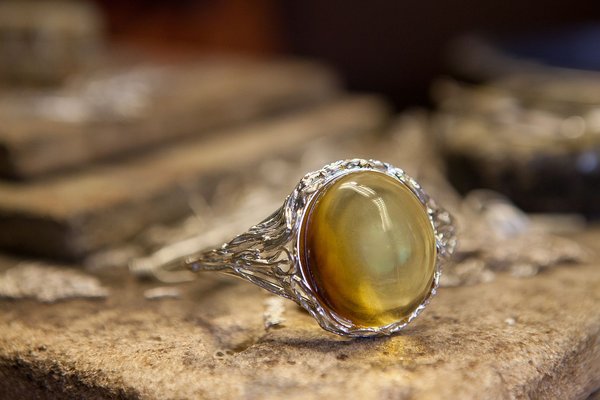 Finally, we go to S&A in Gdynia – the largest Polish amber company that can be visited by prior arrangement. The company processes several tons of amber per year and produces millions of jewellery items. Its products are sold all over the world. The market with the most absorptive power is China, where S&A has 86 shops. Our host is Joanna Gęsiarz, a walking encyclopedia of amber. We pass through all production stages, from the sorting room to the manual production department where polished ambers are set in silver and gold and combined with leather, enamel or precious stones. “Polish design is much appreciated in the world,” Joanna tells us. Necklaces, pendants, bracelets, earrings and rings are made by a team of designers led by Professor Sławomir Fijałkowski, head of the Jewellery Design Workshop at the Academy of Fine Arts in Gdansk. “I do not like diamonds, they are boring and they all look the same,” our tells us. “Amber, on the other hand…”
Finally, we go to S&A in Gdynia – the largest Polish amber company that can be visited by prior arrangement. The company processes several tons of amber per year and produces millions of jewellery items. Its products are sold all over the world. The market with the most absorptive power is China, where S&A has 86 shops. Our host is Joanna Gęsiarz, a walking encyclopedia of amber. We pass through all production stages, from the sorting room to the manual production department where polished ambers are set in silver and gold and combined with leather, enamel or precious stones. “Polish design is much appreciated in the world,” Joanna tells us. Necklaces, pendants, bracelets, earrings and rings are made by a team of designers led by Professor Sławomir Fijałkowski, head of the Jewellery Design Workshop at the Academy of Fine Arts in Gdansk. “I do not like diamonds, they are boring and they all look the same,” our tells us. “Amber, on the other hand…”
NELLY KAMIŃSKA
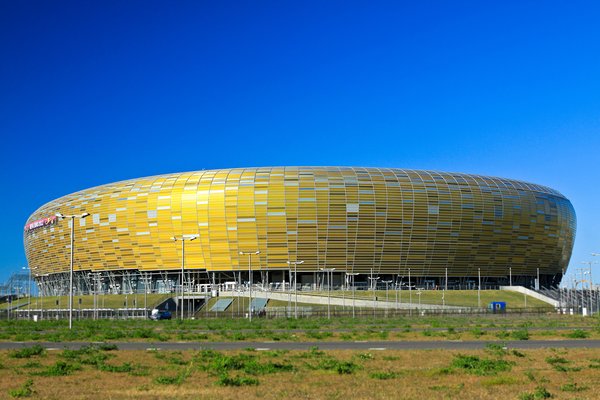
Inspired by amber
The name and the route of the A1 motorway, the so-called Amber Motorway, connecting Gdansk with the Czech border at Gorzyczki, traces back to the main Amber Road which ran from the Baltic Sea to the Roman Aquileia between the 1st and the 3rd century AD. Amber also inspired the designers of the PGE Arena in Gdansk, one of the most eye-catching sports facilities in Europe, which indeed resembles a large golden amber nugget.
21.10.2015
